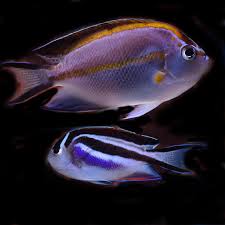Myths of the Dragon and its Intersection with Chinese Mythology

Dragons have held an essential place in Chinese mythology, where they are revered as symbols of power, strength, and divine protection. Over thousands of years, dragons have not only been woven into the fabric of Chinese culture but have also intermingled with other powerful mythological beings and forces. These dragons often appear in ancient legends, blending with various deities, spirits, and celestial forces to create a complex network of mythical tales that represent the relationship between the divine and the mortal world. This article will explore the fascinating intersection of dragons and Chinese mythology, focusing on the legendary stories where dragons play central roles in shaping cosmic balance, empires, and the lives of gods.
The Role of Dragons in Chinese Mythology
In traditional Chinese thought, the dragon is not a mere mythical creature; it embodies a divine power that controls the elements of nature, particularly water, weather, and fertility. Dragons are often associated with the ability to bring rain, which is why they are considered vital to agricultural prosperity. Dragons also symbolize the harmonious balance between heaven and earth, maintaining order in the cosmos through their connection to celestial and earthly realms.
There are many types of dragons in Chinese mythology, each with a specific role or power. The most famous is the Lóng (龙), often referred to as the Imperial Dragon, which represents imperial authority and cosmic order. Other types of dragons include the Black Dragon, the Yellow Dragon, and the Azure Dragon, each representing different elements or directions in the cosmic world. These dragons feature prominently in various legends, often associated with gods, emperors, and mythological events that shaped China’s history.
The Legend of the Dragon and the Goddess Nüwa
One of the earliest and most significant stories involving a dragon is the creation myth of Nüwa, the goddess who is credited with creating humanity and restoring balance to the world. According to the myth, after the world was created, chaos ensued, and the heavens and earth were not in harmony. A great flood spread across the land, and Nüwa, distressed by the state of the world, decided to intervene.
To repair the broken sky, Nüwa used five colored stones that she melted to patch the cracks in the sky. In some versions of the myth, a dragon appears in this story, assisting Nüwa in her efforts. The dragon either aids Nüwa in gathering the stones or becomes one of the creatures she creates to restore the balance of nature. Some versions suggest that the dragon is one of the animals sent by Nüwa to help her control the floodwaters, which in turn echoes the dragon’s association with water control.
The dragon’s connection to Nüwa symbolizes its role in restoring harmony in the world and its power over natural forces. In this context, the dragon is not merely a destructive force but a symbol of cosmic order, reinforcing its association with divine intervention in the natural world.
The Dragon and the Yellow Emperor (Huangdi)
The Yellow Emperor, or Huangdi, is one of the most important figures in Chinese mythology. He is considered the ancestor of the Chinese people and the first legendary emperor of China, ruling during the mythical era of the Five Emperors. Huangdi’s reign was marked by prosperity, invention, and the establishment of Chinese civilization, and his association with the dragon is central to his legendary status.
According to legend, Huangdi’s divine right to rule was signified by a golden dragon, which served as a symbol of his imperial authority. The dragon was said to have appeared at the moment of his birth, marking him as a ruler favored by the heavens. In some versions of the myth, the dragon is even said to have been a physical manifestation of Huangdi’s soul, representing the celestial connection between the emperor and the divine.
As the myth goes, Huangdi’s rule brought peace and stability to the land, and his connection to the dragon represented the harmony between the human and divine realms. This deep bond between the emperor and the dragon reinforced the idea of the Mandate of Heaven, a belief that Chinese emperors ruled with the divine approval of the heavens. In this context, the dragon serves as a protector of the emperor and a guardian of his divine right to rule.
The Azure Dragon and the Four Symbols
In Chinese mythology, the Four Symbols are a group of four mythological creatures that represent the cardinal directions and are often used in astrological and cosmological contexts. The Azure Dragon (青龙, Qīnglóng) is one of these creatures, representing the East and the spring season. It is a symbol of vitality, new beginnings, and renewal, and it is often depicted as a large, serpentine dragon with five claws.
The Azure Dragon’s connection with the Four Symbols emphasizes its role as a cosmic guardian, representing order and balance in the universe. The dragon is often shown in a dualistic relationship with the other three symbols: the White Tiger (representing the West and autumn), the Vermilion Bird (representing the South and summer), and the Black Tortoise (representing the North and winter). Together, these four creatures embody the harmony of the natural world and the cycles of life.
The Azure Dragon is particularly significant in Taoist cosmology, where it is linked to the concept of Qi (气), the vital life force that flows through all living things. The dragon’s connection to this life force reflects its role as a spiritual and physical force that guides and nurtures the balance of the universe.
The Dragon and the Battle with the Phoenix
The mythological clash between the dragon and the phoenix is one of the most iconic tales in Chinese folklore. In this story, the dragon, as the embodiment of imperial power and authority, is pitted against the phoenix, a symbol of beauty, grace, and the balance of Yin and Yang. The dragon and phoenix are often seen as complementary forces, representing opposites that must coexist in harmony.
In some versions of the myth, the dragon and phoenix engage in a fierce battle, but rather than being a destructive confrontation, it is a contest of strength and virtue. The two creatures are believed to represent the duality of the universe – the dragon as a symbol of Yang, or active energy, and the phoenix as a symbol of Yin, or passive energy. Their conflict symbolizes the need for balance between these forces, echoing the Taoist philosophy of harmony in all things.
The dragon and phoenix are often paired together in Chinese art, especially in imperial iconography, where they symbolize the balance of male and female, power and grace, and the eternal struggle to maintain harmony in the world. This pairing further emphasizes the importance of the dragon in Chinese mythology, not only as a force of power but also as a necessary element of balance in the natural world.
The Dragon’s Role in the Story of the Dragon Gate
The myth of the Dragon Gate is another famous tale in Chinese folklore, which illustrates the dragon’s association with transformation and ascension. According to this story, a carp who swam upstream and jumped over the Dragon Gate waterfall would transform into a dragon. The story symbolizes perseverance, determination, and the potential for transformation through hard work and dedication.
The Dragon Gate legend is widely interpreted as a metaphor for personal growth and the rewards of overcoming obstacles. The carp’s journey to the Dragon Gate represents the struggle to reach higher levels of success and enlightenment, while the dragon represents the ultimate achievement of that goal. In this way, the dragon becomes a symbol of transformation, not just in a physical sense but in a spiritual and intellectual context as well.
This myth is particularly popular during the Dragon Boat Festival, where the imagery of the carp and the dragon is celebrated in various cultural activities. The story of the Dragon Gate is a testament to the dragon’s association with strength, change, and the transformative power of nature.
The Dragon and the Empress of Heaven, Xiwangmu
In Chinese mythology, the Empress of Heaven, Xiwangmu, is one of the most powerful and revered deities. She is often depicted with a dragon as a companion or mount, symbolizing her power over the heavens and her connection to celestial forces. Xiwangmu is associated with immortality, wisdom, and the guardianship of the Western Paradise, a realm of eternal life.
In certain myths, the dragon serves as a guardian of the Empress of Heaven’s domain, protecting the sacred fruit of immortality that she controls. The dragon’s presence in these myths underscores its role as a protector of divine realms and its connection to the maintenance of cosmic order.
The dragon’s interaction with Xiwangmu highlights the connection between divine rulers and their spiritual guardians, reinforcing the idea of the dragon as a symbol of both protection and strength. This relationship also emphasizes the dragon’s connection to the pursuit of immortality, a key theme in Chinese mythology.
Conclusion
The dragon is one of the most enduring and complex symbols in Chinese mythology, and its intersection with other mythological beings has enriched the cultural tapestry of China. From its connection with powerful deities like Nüwa and Huangdi to its symbolic role in the balance of cosmic forces, the dragon has represented both divine power and the harmonious forces that govern the universe. Throughout these myths, the dragon continues to be a central figure, embodying the principles of balance, transformation, and strength that are essential to Chinese cultural and philosophical traditions. Whether as a protector, a guide, or a symbol of the heavens, the dragon’s mythical significance remains an indelible part of Chinese heritage, continuing to inspire and shape the nation’s identity.

